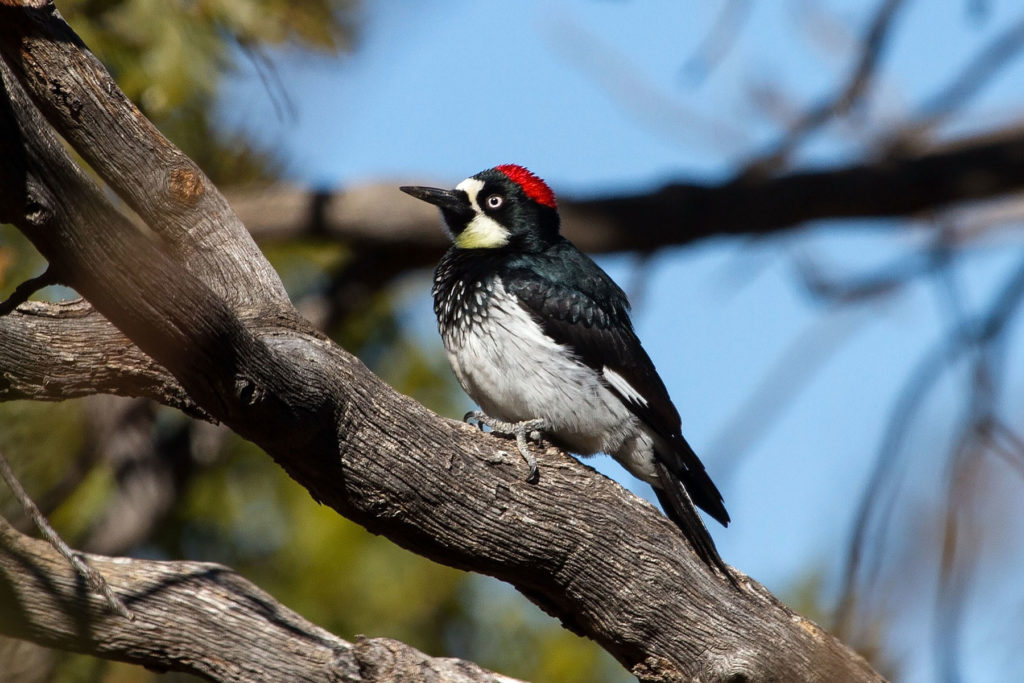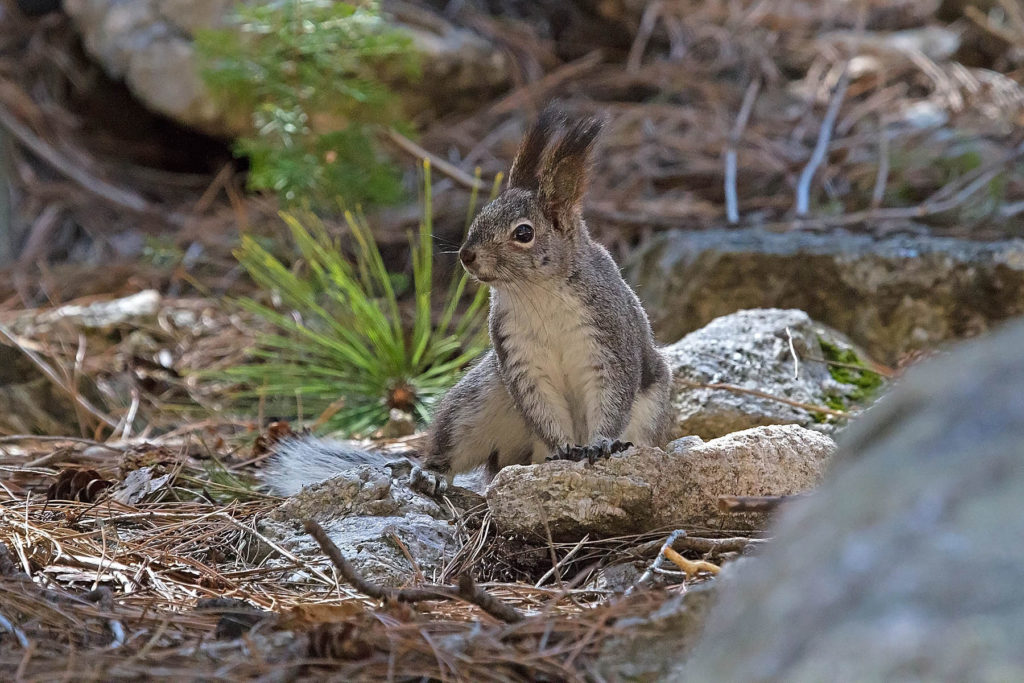Birding 101
Knowing more about where to look, how to look and what you are looking for in a given environment can greatly enhance your wildlife watching experience.
Phainopepla – Mick Thompson
People often miss animals that are very near because they are not thinking about looking for wildlife. To begin to see more wildlife, you need to focus on looking for it using all of your senses.
Where to Look - Think like Wildlife
- Learning a little about what wildlife needs to survive gives clues to where you can find them. Different species have different habitat requirements for water, food, shelter and adequate space.
- Look to the edge Watch the edges of the desert, forest or stream. Most wildlife species spend their time along habitat edges. The border between two habitats is a prime viewing spot.
How to Look - Quiet, but Active Viewing
Be Natural
- Relax and make yourself small and unassuming.
- Move slowly in a consistent fashion and make frequent stops.
- Don’t stare! Most animals see this as a threat.
- Wear muted colors and fabrics that don’t ‘rustle’ when you move.
- Use the lay of the land: hills, drainages and gullies provide cover, while skylines leave you easily spotted.
- Use light to your advantage: stand or sit with the sun behind you to stay in the shadows.
- Talk softly only if you must.
- Scan the landscape with “soft eyes” to see the landscape versus focusing on details.
- Look at a distance, then in the foreground and back.
- Use peripheral vision to pick up movement.
- Magnify and focus your vision. Optics allow you to watch from a distance with less risk to humans or animals. Even if you don’t see wildlife, use your optics to scan suitable habitat and you may catch a glimpse of an animal.

Appreciate AZ
Remember to respect the environment during your wildlife watching adventures: step lightly and leave rocks, logs, flowers, nests, etc., as you found them.
Acorn Woodpecker – Lois Manowitz
What to Look for
Shapes
- Look for parts of an animal, such as its head, tail, ear, wing, or antler.
- Notice things out of place, such as strange shapes, or contrasts between colors, patterns and textures.
- Focus on lines that do not match the surroundings, such as horizontal lines in a vertical landscape or curves among straight lines.
- Look for color contrasts against the natural background.
- Motion is the big giveaway. Look above and below to catch a glimpse of something walking, flying, feeding or scratching.
- Look for signs that give you clues about what animals live there. Watch for tracks, trails, rubbing spots, nests, droppings, tunnels, food remains, webs, gnawed wood or dams.
When to Look
Time of day
- Dawn and dusk are often the most active times for the majority of wildlife species.
- Some wildlife is active in daylight hours. Other species are only out at night.
- Nocturnal or night-time wildlife tends to be more active during full moon periods, with a few exceptions such as bats, frogs and toads.
- Some wildlife appears only during certain seasons, such as when they are migrating. Some sleep through the winter cold or the summer heat.
- Mating seasons make wildlife easier to find because they are more active and often preoccupied with mating rituals.
- Wildlife is often active in poor weather, although most will seek cover during really bad weather.
- Many animals become lively again just after the inclement weather breaks.
- Wildlife is typically less active in the heat of the day.

Don't Pursue Wildlife
Always practice responsible and safe viewing. Don’t pursue wildlife. It saps the animal of its energy and causes stress. Intruding too far into an animal’s space could also pose a danger for the viewer if the animal perceives the person as a threat.
Abert’s Squirrel – Lois Manowitz
Before You Go
- Don’t use perfumes, personal care products with fragrance or other unnatural scents when you go out to observe wildlife.
- Wear muted, natural-colored clothing. This will help you blend in with the environment. The further you go into the wilderness, the more important this is.
- Dress in clothing that is quiet when you move. Rustling windbreakers, nylon knapsacks, rattling plastic bags and clanking canteens decrease your chances of seeing wildlife. Animals in parks and refuges are more accustomed to seeing people and cars and may let you get closer, even if you wear perfume, glittery jewelry, etc., but generally animals in the wild will slip away before you get a chance to see them.
- For better vision, shade your eyes with a cap or visor.
- Leave pets at home.
When You Enter An Area - Learn to Slow Down!
- Stop and look for several minutes. Sit down and use all of your senses. Listen for movement and calls. Catch the smells of your surroundings.
- Look ahead. When you walk through an area, the wildlife may slip away unseen because you’re too close. Ahead, the animals may not be aware of your presence yet.
- If you choose to sit in one place and wait, flatten yourself against a tree or rock to blend with the landscape. Sit in a place that provides cover for wildlife. Rarely will wildlife cross a big, open space to pass by you.
- If you are close to rushing rivers or streams, look upstream and down. Often the noise of the flowing water will deaden your noise, and an animal will not realize you are there.
When You See Wildlife
- If you glimpse an animal, freeze. Staying absolutely motionless is the same technique many animals use to keep from being detected.
- If an animal you are watching sees you, but doesn’t flee, avert your eyes. “Staring” is a threatening gesture to most wildlife, so glance out of the corners of your eyes.
- If the animal seems to tolerate you, try to get a little closer by focusing your attention on the ground and walking in a slow zigzag direction, moving closer to the animal. Watch for signs that you are getting too close.

